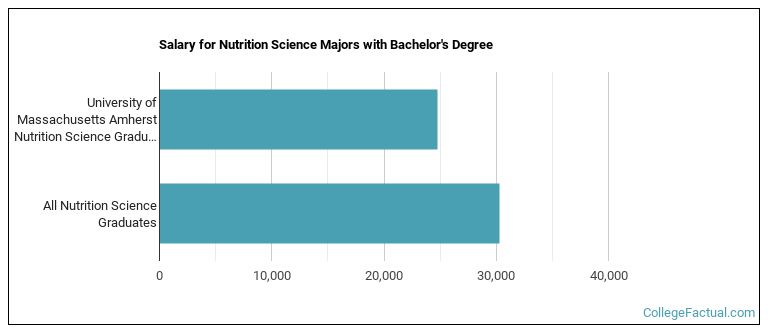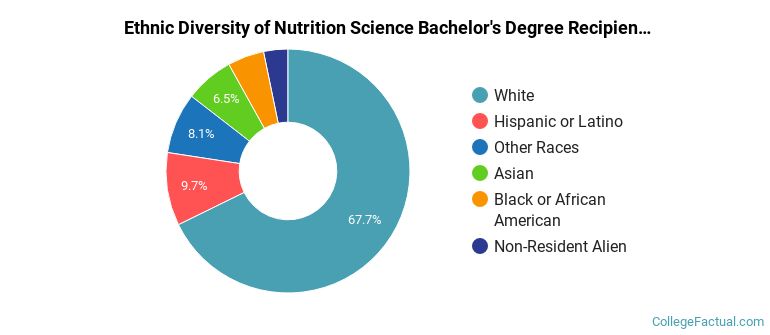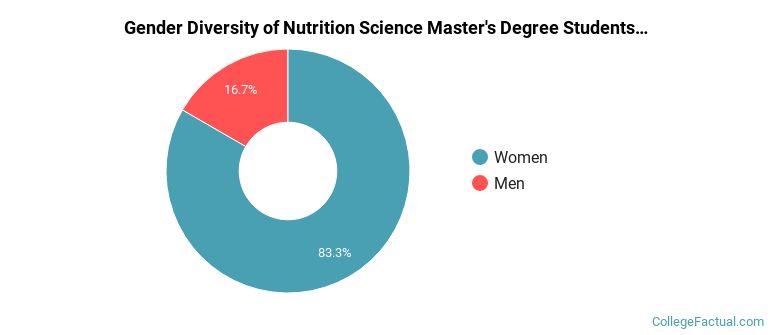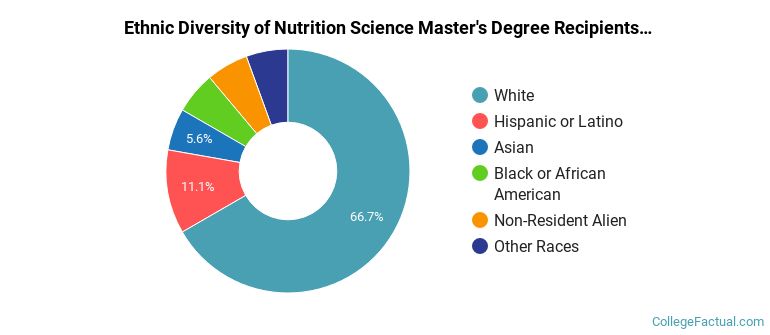 by our College Data Analytics Team
by our College Data Analytics TeamWe've pulled together some essential information you should know about the program, including how many students graduate each year, the ethnic diversity of these students, average starting salaries, and more. We've also included details on how UMass Amherst ranks compared to other colleges offering a major in nutrition science.
Go directly to any of the following sections:
The bachelor's program at UMass Amherst was ranked #16 on College Factual's Best Schools for nutrition science list. It is also ranked #3 in Massachusetts.
During the 2021-2022 academic year, University of Massachusetts Amherst handed out 62 bachelor's degrees in nutrition science. This is a decrease of 16% over the previous year when 74 degrees were handed out.
In 2022, 12 students received their master’s degree in nutrition science from UMass Amherst. This makes it the #32 most popular school for nutrition science master’s degree candidates in the country.
In addition, 2 students received their doctoral degrees in nutrition science in 2022, making the school the #34 most popular school in the United States for this category of students.
The median salary of nutrition science students who receive their bachelor's degree at UMass Amherst is $24,746. Unfortunately, this is lower than the national average of $30,311 for all nutrition science students.

During the 2022-2023 academic year, part-time undergraduate students at UMass Amherst paid an average of $1,605 per credit hour if they came to the school from out-of-state. In-state students paid a discounted rate of $691 per credit hour. The average full-time tuition and fees for undergraduates are shown in the table below.
| In State | Out of State | |
|---|---|---|
| Tuition | $16,591 | $38,527 |
| Fees | $766 | $766 |
| Books and Supplies | $1,000 | $1,000 |
| On Campus Room and Board | $14,869 | $14,869 |
| On Campus Other Expenses | $1,440 | $1,440 |
Learn more about UMass Amherst tuition and fees.
Of the 62 nutrition science students who graduated with a bachelor's degree in 2021-2022 from UMass Amherst, about 8% were men and 92% were women.

The majority of the students with this major are white. About 68% of 2022 graduates were in this category.
The following table and chart show the ethnic background for students who recently graduated from University of Massachusetts Amherst with a bachelor's in nutrition science.

| Ethnic Background | Number of Students |
|---|---|
| Asian | 4 |
| Black or African American | 3 |
| Hispanic or Latino | 6 |
| White | 42 |
| Non-Resident Aliens | 2 |
| Other Races | 5 |
UMass Amherst does not offer an online option for its nutrition science bachelor’s degree program at this time. To see if the school offers distance learning options in other areas, visit the UMass Amherst Online Learning page.
For the most recent academic year available, 17% of nutrition science master's degrees went to men and 83% went to women.

The majority of the students with this major are white. About 67% of 2022 graduates were in this category.
The following table and chart show the ethnic background for students who recently graduated from University of Massachusetts Amherst with a master's in nutrition science.

| Ethnic Background | Number of Students |
|---|---|
| Asian | 1 |
| Black or African American | 1 |
| Hispanic or Latino | 2 |
| White | 12 |
| Non-Resident Aliens | 1 |
| Other Races | 1 |
Take a look at the following statistics related to the make-up of the nutrition science majors at University of Massachusetts Amherst.
| Related Major | Annual Graduates |
|---|---|
| Other Multi/Interdisciplinary Studies | 316 |
| Data Analytics | 267 |
| Sustainability Science | 62 |
| Natural Sciences | 31 |
| Interdisciplinary Studies | 29 |
More about our data sources and methodologies.